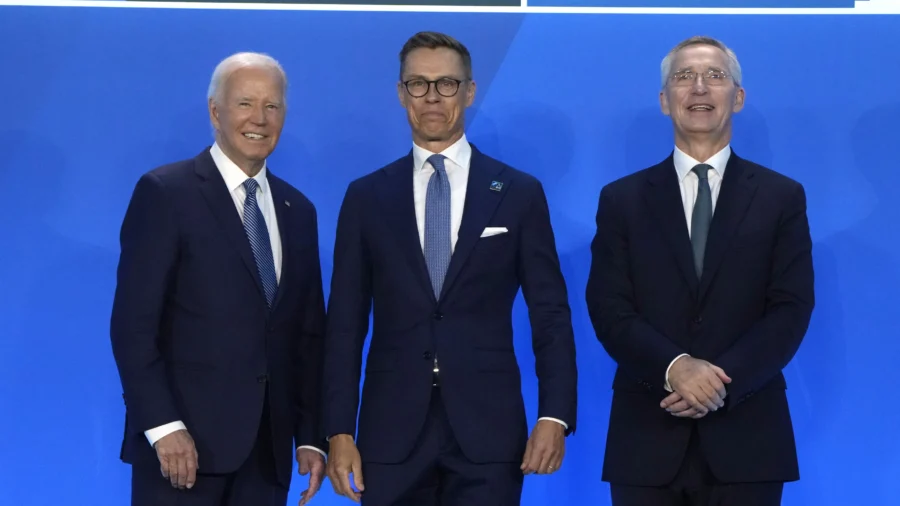The United States, Canada, and Finland are launching a trilateral security partnership to boost the production of icebreaking ships, amid growing competition in the Arctic region.
President Joe Biden, Canadian Prime Minister Justin Trudeau, and Finnish President Alexander Stubb formally announced the agreement on July 11, during the ongoing North Atlantic Treaty Organization summit in Washington.
Dubbed the Icebreaker Collaboration Effort (ICE) Pact, the agreement outlines areas of cooperation between the three governments to develop more ships that can operate in the icy waters of the far north.
The three partners will share information about icebreaker production, join together in workforce development for this area of the shipbuilding industry, and fill a need in the shipping market for other allies and partners.
In a background press call on July 10, a White House official said the new agreement could create an order book for the three partner nations to build 70 to 90 new icebreakers over the next decade for themselves and their allies and partners “and export polar icebreakers for their needs at speed and affordable cost.”
“Due to the capital intensity of shipbuilding, long-term, multi-ship order books are essential to the success of a shipyard,” the White House said on July 11.
Arctic Strategic Competition Growing
The effort to boost icebreaker ship production among the three principal signatories and their partners comes as Russia and China look more intently at the northern sea region.
With increased access to the Arctic comes opportunities to expand international trade routes.
The Arctic also yields potentially massive reserves of untapped natural resources.
In 2008, the U.S. Geological Survey assessed the Arctic region could be storing up to 90 million barrels of oil, 1,669 trillion cubic feet of natural gas, and 44 billion barrels of natural gas liquids.
Previewing the ICE Pact in a July 10 press call, U.S. deputy national security adviser for international economics Daleep Singh noted the Russian and Chinese leaders are increasingly partnering to expand their presence in the Arctic, including combined naval patrols.
This expanding Russian and Chinese partnership in the Arctic is a driving force behind the new agreement between the United States, Canada, and Finland.
“Without this arrangement, we’d risk our adversaries developing an advantage in a specialized technology with vast geostrategic importance, which could also allow them to become the preferred supplier for countries that also have an interest in purchasing polar icebreakers,” Mr. Singh said.
In a May report, the Congressional Research Service (CRS) noted that the U.S. Coast Guard has two icebreakers in service, a third inoperable icebreaker, and could potentially call upon three more privately owned vessels for icebreaking efforts.
The Coast Guard is advancing a new Polar Security Cutter program to bolster the U.S. icebreaker fleet and has two cutters on order with a third planned.
The initial 2024 delivery of these new cutters has been pushed back, with the CRS estimating the first of these new ships won’t be ready until 2029.
According to the report, Canada has 12 icebreakers within government operation, and Finland has nine.
By comparison, Russia has 36 icebreakers in government operation, two more government-owned but unavailable icebreakers, and the potential to call up another 15 privately owned icebreakers.
China has four ice vessels.

Louisiana-based Bollinger Shipyards is handling the U.S. Coast Guard’s current order of Polar Security Cutters.
The White House said the new ICE Pact will continue this arrangement and the ships now under order with Bollinger Shipyards will provide “the foundation of the American effort to enhance our surface presence in the polar regions.”
In a July 11 press statement, Mr. Stubb said the new ICE Pact creates a key opportunity for Finland, one of NATO’s newest members. The country became an official NATO member in April of 2023.
“Eighty percent of the world’s icebreakers are designed in Finland and 60 percent are built in Finland. Finnish know-how is valued. Without Finland’s NATO membership, this declaration would not have been made,” the Finnish president said.
From The Epoch Times

